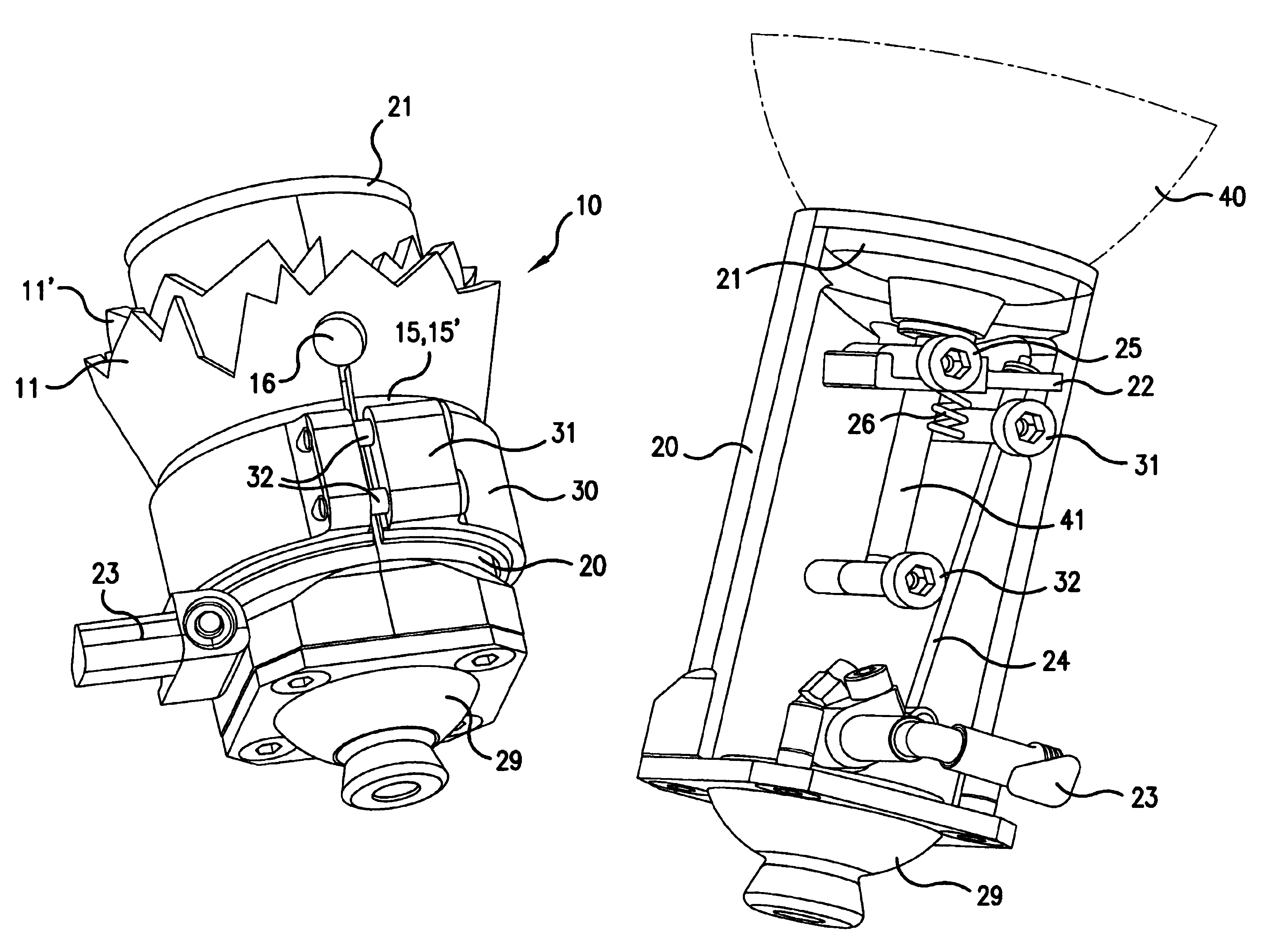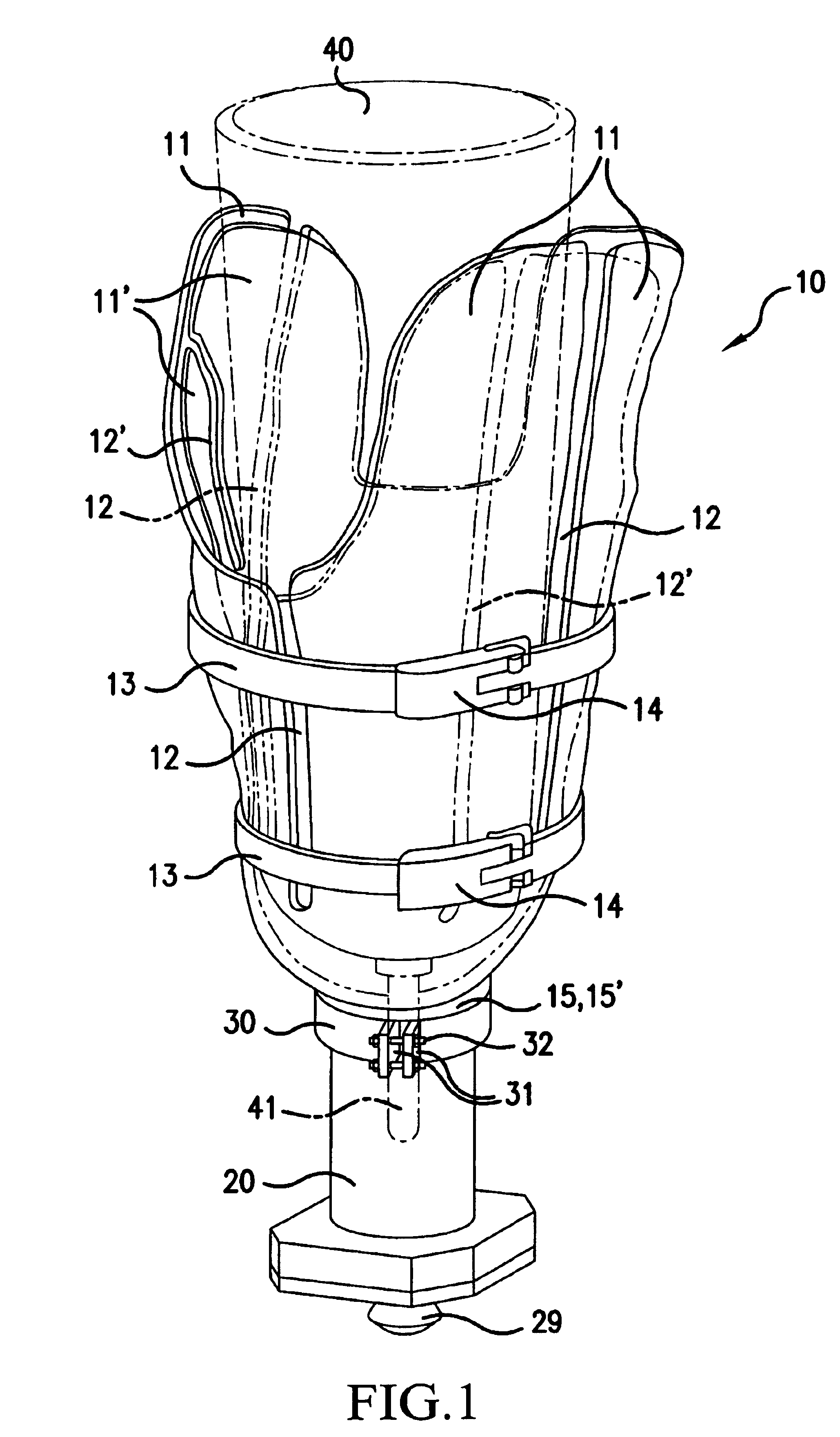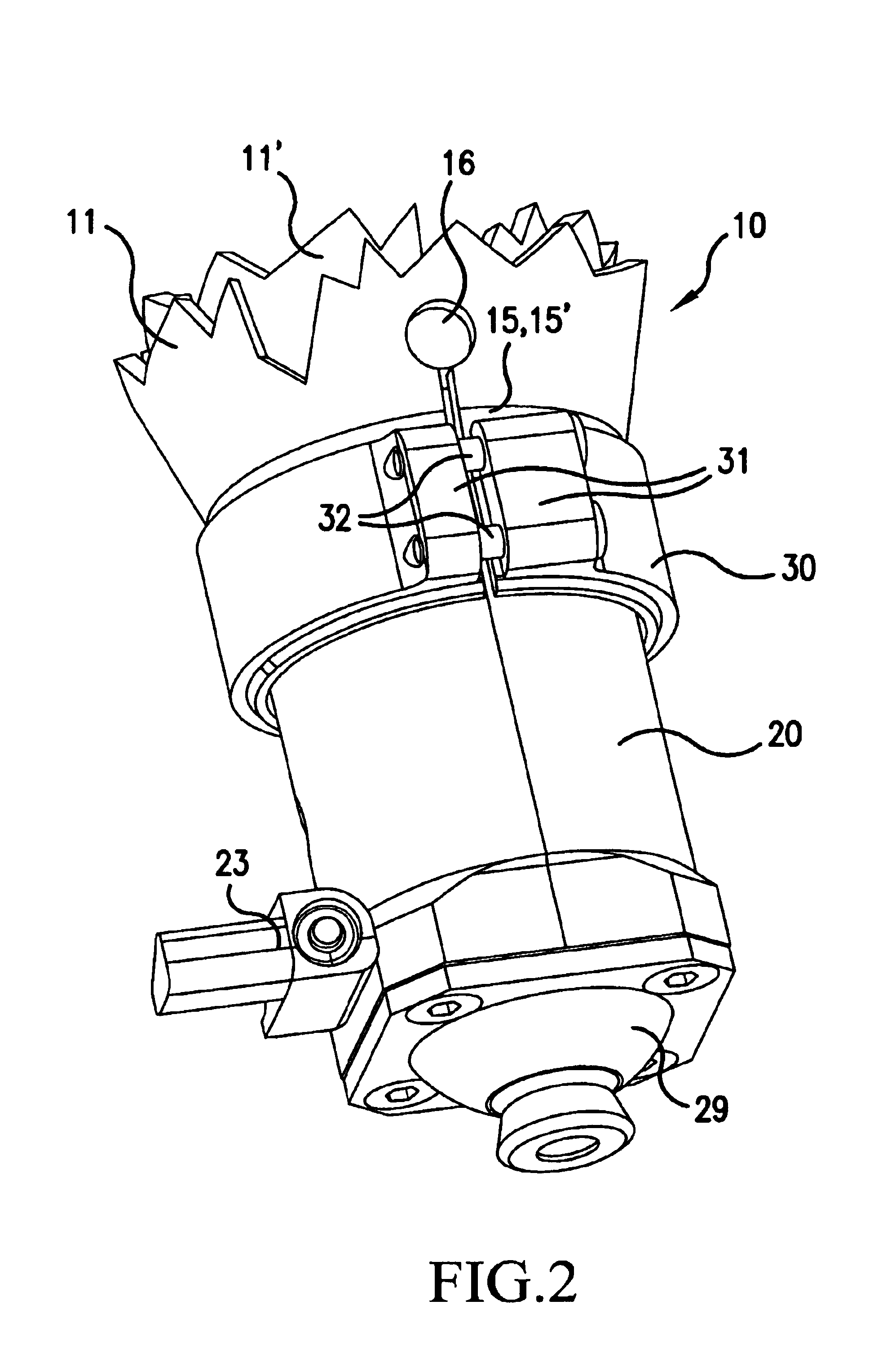Prosthesis
a technology of prosthesis and stent, applied in the field of prosthesis, can solve the problems of not achieving optimal position, and achieve the effects of reducing the number of parts
- Summary
- Abstract
- Description
- Claims
- Application Information
AI Technical Summary
Benefits of technology
Problems solved by technology
Method used
Image
Examples
Embodiment Construction
[0043]FIG. 1 is a perspective illustration of a prosthesis shaft 10, which is anatomically fitted to a limb stump (not shown), at the bottom of which, a coupling 29, e.g., a holding element, is mounted to which, if need be, an artificial limb, for example an arm or foot prosthesis, can be attached via an extension rod.
[0044]The prosthesis shaft 10 includes an outer shell 11 and an inner shell 11′. In the outer and inner shells 11, 11′, there are slits 12, 12′ extending essentially in an axial direction, which are staggered in relation to each other. In an ideal situation, the outer and inner shell 11, 11′ touch each other like the skins of an onion.
[0045]When the outer and inner shell 11, 11′ is made of a carbon fiber-reinforced plastic, thinner walls and thus reduced weight can be achieved. If the reinforced fibers extend mostly in an axial direction, the shells 11, 11′ are inflexible in a longitudinal direction, and flexible in a circumferential direction.
[0046]In order to be able...
PUM
 Login to View More
Login to View More Abstract
Description
Claims
Application Information
 Login to View More
Login to View More - R&D
- Intellectual Property
- Life Sciences
- Materials
- Tech Scout
- Unparalleled Data Quality
- Higher Quality Content
- 60% Fewer Hallucinations
Browse by: Latest US Patents, China's latest patents, Technical Efficacy Thesaurus, Application Domain, Technology Topic, Popular Technical Reports.
© 2025 PatSnap. All rights reserved.Legal|Privacy policy|Modern Slavery Act Transparency Statement|Sitemap|About US| Contact US: help@patsnap.com



